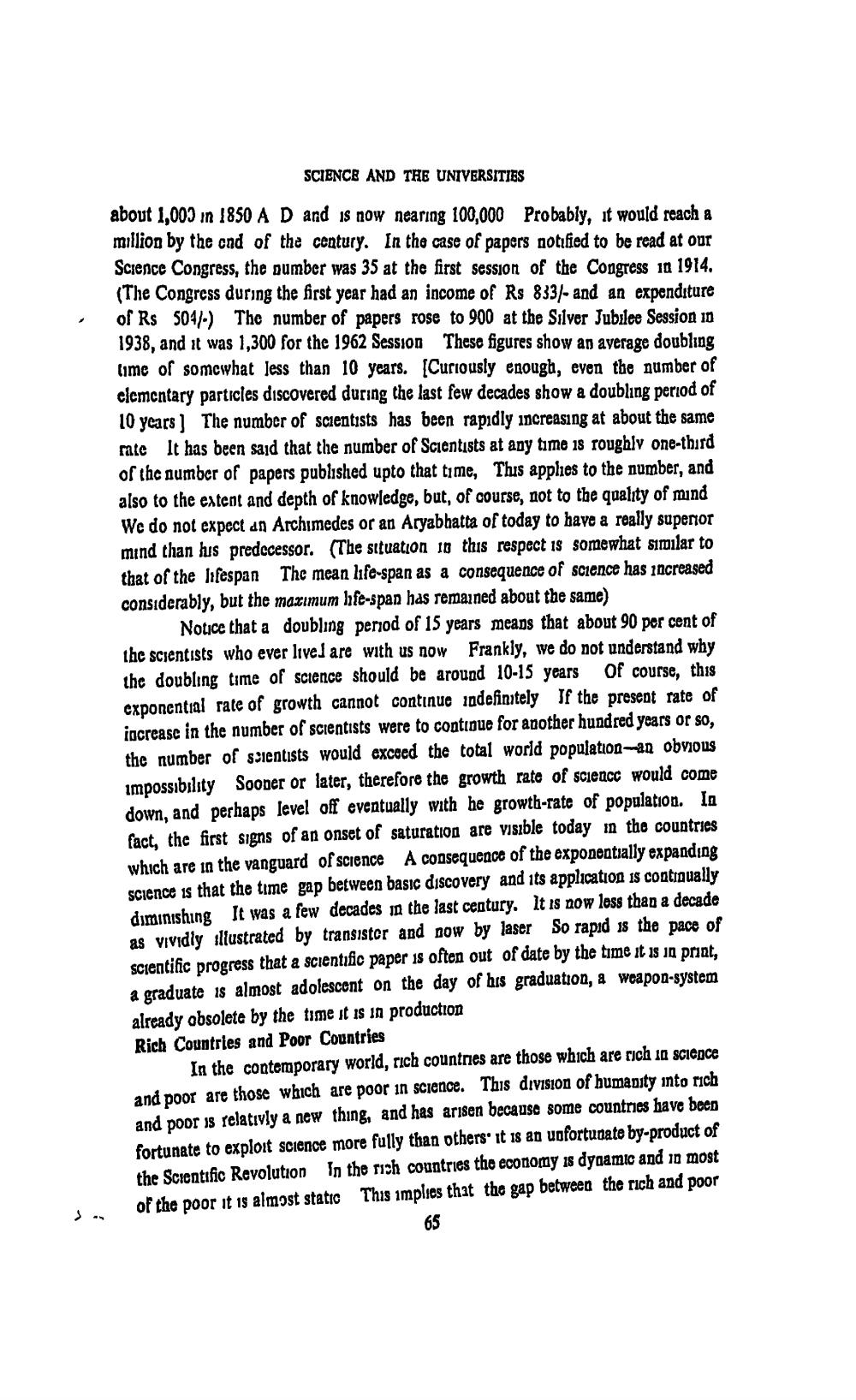________________
SCIENCE AND THE UNIVERSITIES about 1,007 in 1850 A D and is now nearing 100,000 Probably, it would reach a million by the cad of the century. In the case of papers notified to be read at our Science Congress, the qumber was 35 at the first session of the Congress in 1914. (The Congress during the first year had an income of Rs 833)- and an expenditure of Rs 504)) The number of papers rose to 900 at the Silver Jubilee Session in 1938, and it was 1,300 for the 1962 Session These figures show an average doubling time of somewhat less than 10 years. (Curiously enough, even the number of clcmcntary particles discovered during the last few decades show a doubling period of 10 years The number of scientists has been rapidly increasing at about the same rate It has been said that the number of Scientists at any time 18 roughly one-third of the number of papers published upto that time, This applies to the number, and also to the extent and depth of knowledge, but, of course, not to the quality of mind We do not expect an Archimedes or an Aryabhatta of today to have a really superor mind than his predecessor. (The situation 10 this respect is somewhat similar to that of the lifespan The mean hfe-span as a consequence of science has increased considerably, but the maximum hfe-span has remained about the same)
Notice that a doubling period of 15 years means that about 90 per cent of the scientists who ever live) are with us now Frankly, we do not understand why the doubling time of science should be around 10-15 years of course, this exponential rate of growth cannot continue indefinitely If the present rate of increase in the number of scientists were to continue for another hundred years or so, the number of scientists would exceed the total world population-an obvious impossibility Sooner or later, therefore the growth rate of sciencc would come down, and perhaps level off eventually with he growth-rate of population. La fact, the first signs of an onset of saturation are visible today in the countries which are in the vanguard of science A consequence of the exponentially expanding science is that the time gap between basic discovery and its application is continually diminishing It was a few decades in the last century. It is now less than a decade as vividly illustrated by transistor and now by laser So rapid is the pace of scientific progress that a scientific paper is often out of date by the time it is ja print, a graduate is almost adolescent on the day of his graduation, a weapon-system already obsolete by the time it is in production Rich Countries and Poor Countries
In the contemporary world, rich countries are those which are rich in science and poor are those which are poor in science. This division of humanity into rich and poor is relativly a new thing, and has arisen because some countries have been fortunate to exploit science more fully than others. It is an unfortunate by-product of the Scientific Revolution in the rich countries the economy is dynamic and in most of the poor it is almost static This implies that the gap between the rich and poor
65




